A “rocky” start
As we approach the midway point of our scientific voyage, the RV Investigator has made it to the northernmost extent of the Tasmantid Seamount Chain (view our live position here). At the time of writing, we’ve sampled 23 locations at 8 volcanic seamounts.
Some sampling efforts produced lots of different types of interesting rocks, and some just grey sludge (which is still useful for science!).
Here’s a highlights reel of some of the most interesting rocks we’ve found so far.
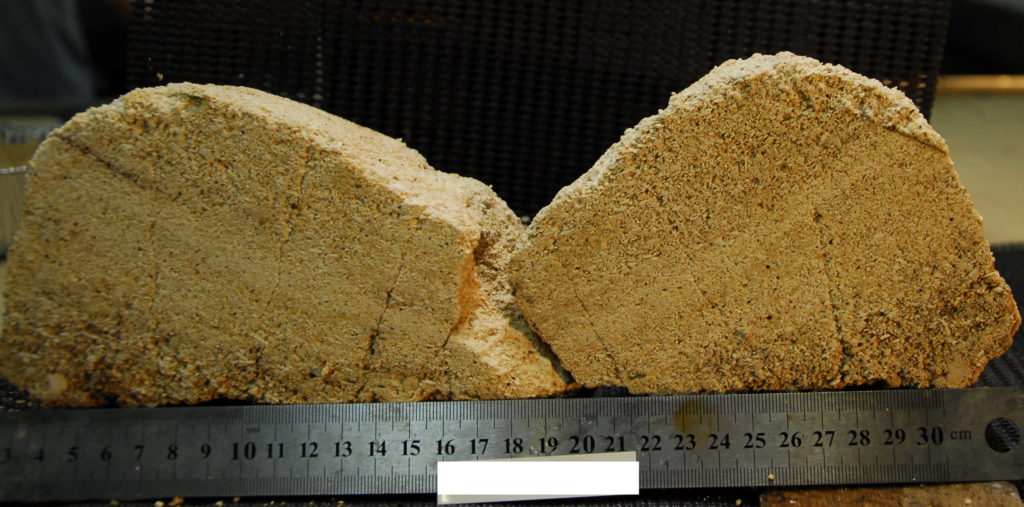 Limestone. These whitish rocks are composed of pieces of living material (like corals and shells) from the reefs that decorate the upper slopes of the volcanic seamounts. These shells and fossil fragments are composed almost entirely of a mineral called calcite (calcium carbonate). In this example the sediment has formed weakly defined layers.
Limestone. These whitish rocks are composed of pieces of living material (like corals and shells) from the reefs that decorate the upper slopes of the volcanic seamounts. These shells and fossil fragments are composed almost entirely of a mineral called calcite (calcium carbonate). In this example the sediment has formed weakly defined layers.
 Fossils. Some of the limestones contain particularly interesting fossils. This example shows a print made by a deep sea coral.
Fossils. Some of the limestones contain particularly interesting fossils. This example shows a print made by a deep sea coral.
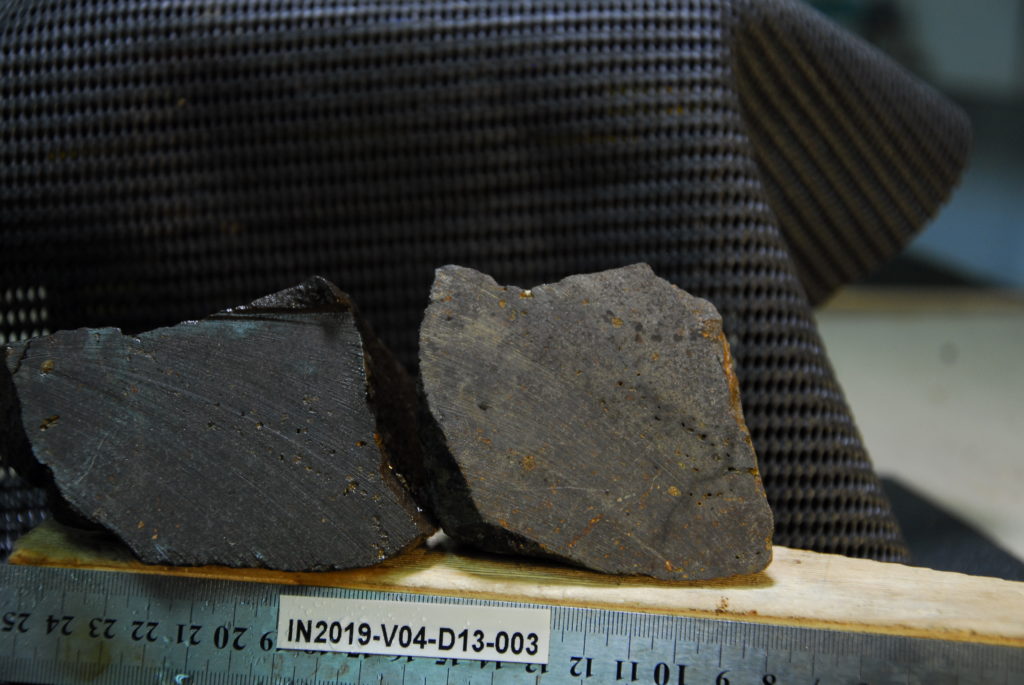 Basalt. This rock is formed when lava (molten rock erupted from volcanoes) cools. In this sample you can see small holes called vesicles, which are representative of gas bubbles. Basalt is typically black, but the colour gets altered by seawater, which gives the ‘rusty’ red colours.
Basalt. This rock is formed when lava (molten rock erupted from volcanoes) cools. In this sample you can see small holes called vesicles, which are representative of gas bubbles. Basalt is typically black, but the colour gets altered by seawater, which gives the ‘rusty’ red colours.
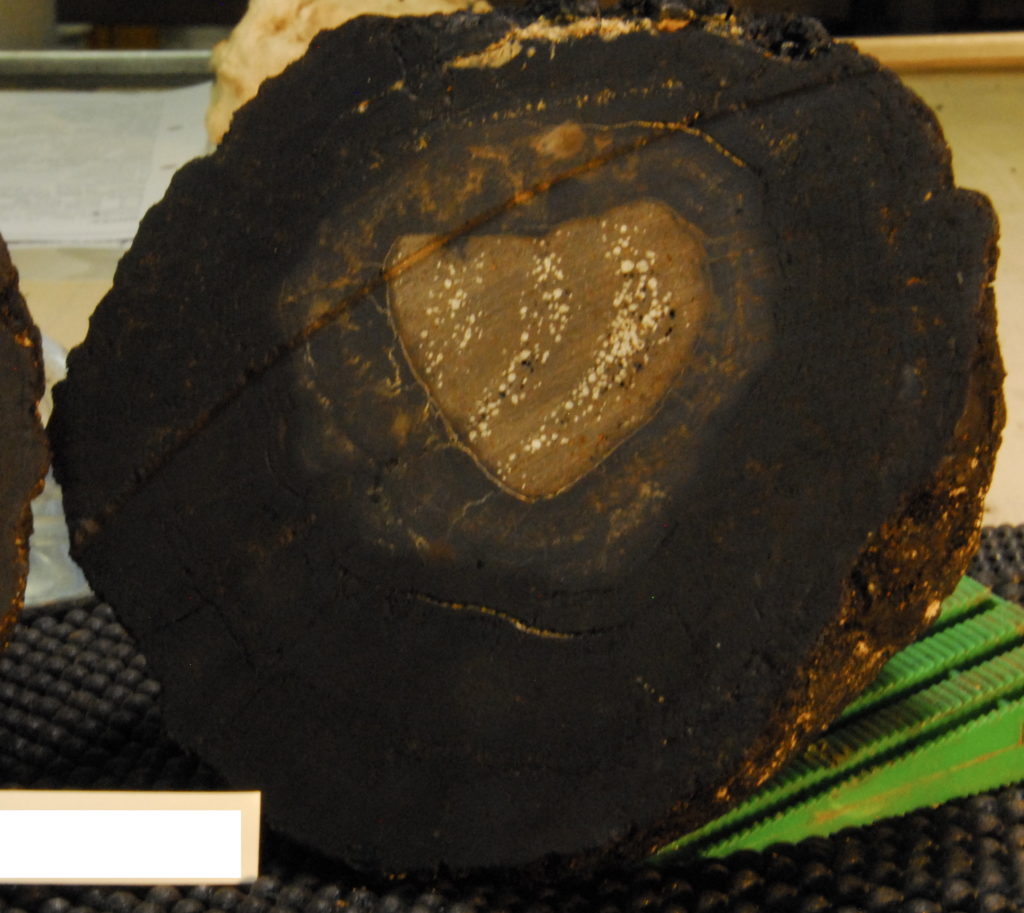 Manganese crusts. This small, heart-shaped piece of basalt has the vesicles (gas bubbles) arranged in lines, probably because it’s from the outside edge of a lava flow. It’s surrounded by a thick, black crust made of manganese oxide, which precipitates out of sea water and covers lots of our rocks. Here you can even see growth rings of manganese, similar to those you find in tree trunks.
Manganese crusts. This small, heart-shaped piece of basalt has the vesicles (gas bubbles) arranged in lines, probably because it’s from the outside edge of a lava flow. It’s surrounded by a thick, black crust made of manganese oxide, which precipitates out of sea water and covers lots of our rocks. Here you can even see growth rings of manganese, similar to those you find in tree trunks.
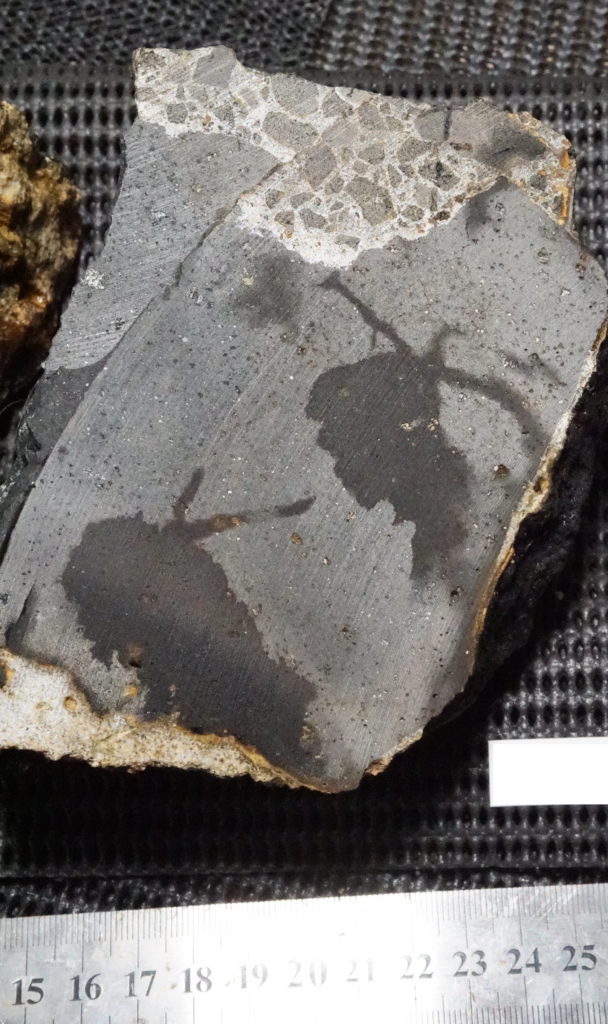
Volcanic breccia. A breccia is a rock made up of angular fragments or ‘clasts’ that sit in a matrix of finer material. There is one big clast of basalt which makes up most of this sample, with some smaller clasts at the top of the picture. Breccias form when pieces of rock get eroded from the side of a slope and collect in a landslide or slump, or by the result of explosive volcanic action.
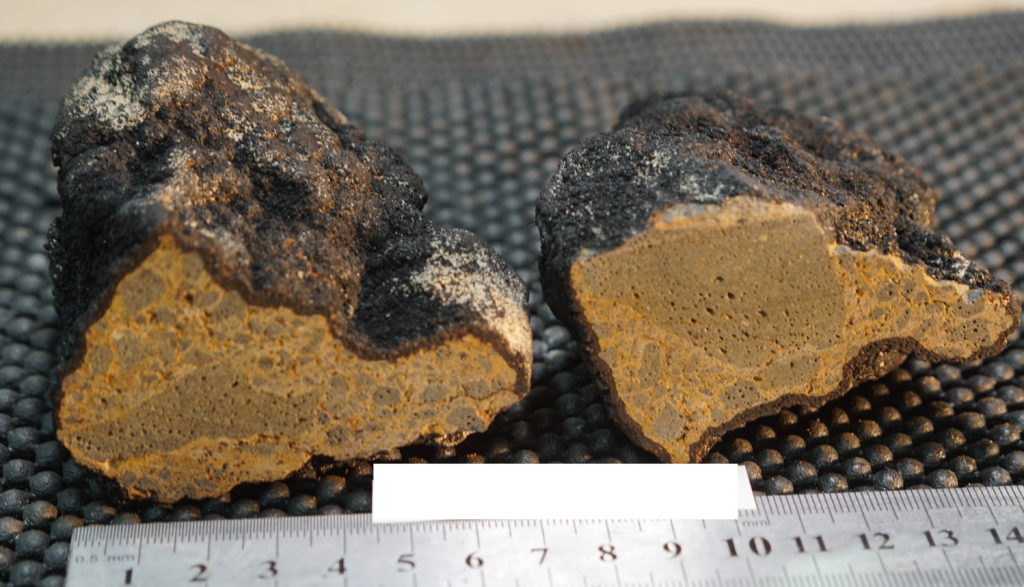
Hyaloclastite. This is a special type of breccia that forms when hot lava comes into contact with cold sea water so cools quickly and cracks. In this case the rock is completely uniform and made up of one single rock type, basalt, which here is also full of vesicles and surrounded by manganese crust.
Lots of these rocks can be analysed back on shore using geochemical techniques to calculate the age of the volcanoes. We now move on to the Louisiade Plateau – a large submerged plateau which may represent the initial onset of volcanism along the Tasmantid seamount chain.
Although geologists do enjoy looking at rocks, we also like to get outside sometimes. Luckily there’s no shortage of beautiful sunsets on the Coral Sea.

Scientists enjoying the sunset.
All rock sample photos courtesy of CSIRO.




Recent comments